 W
WAlberico da Barbiano was an Italian Giussano-class light cruiser, that served in the Regia Marina during World War II. She was named after Alberico da Barbiano, an Italian condottiero of the 14th century.
 W
WAlberto da Giussano was an Italian Giussano-class cruiser, which served in the Regia Marina during World War II. She was launched on 27 April 1930.
 W
WArmando Diaz was a light cruiser of the Condottieri class and the sister-ship of the Luigi Cadorna. She served in the Regia Marina during World War II. She was built by OTO, La Spezia, and named after Armando Diaz, an Italian Field Marshal of World War I.
 W
WSMS Pillau was a light cruiser of the Imperial German Navy. The ship, originally ordered in 1913 by the Russian navy under the name Maraviev Amurskyy, was launched in April 1914 at the Schichau-Werke shipyard in Danzig. However, due to the outbreak of World War I in August 1914, the incomplete ship was confiscated by Germany and renamed SMS Pillau for the East Prussian port of Pillau. The Pillau was commissioned into the German Navy in December 1914. She was armed with a main battery of eight 15 cm SK L/45 (5.9-inch) guns and had a top speed of 27.5 kn. One sister ship was built, Elbing.
 W
WBartolomeo Colleoni was an Italian Giussano-class light cruiser, that served in the Regia Marina during World War II. It was named after Bartolomeo Colleoni, an Italian military leader of the 15th century.
 W
WBolzano was a unique heavy cruiser, sometimes considered to be a member of the Trento class, built for the Italian Regia Marina in the early 1930s, the last vessel of the type to be built by Italy. A modified version of the earlier Trento class, she had a heavier displacement, slightly shorter length, a newer model of 203-millimeter (8.0 in) gun, and a more powerful propulsion system, among other differences influenced by the Zara class that had followed the Trentos. Bolzano was built by the Gio. Ansaldo & C. between her keel laying in June 1930 and her commissioning in August 1933.
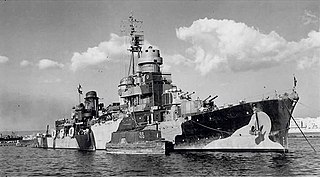 W
WThe Capitani Romani-class was a class of light cruisers acting as flotilla leaders for the Regia Marina. They were built to outrun and outgun the large new French destroyers of the Le Fantasque and Mogador classes. Twelve hulls were ordered in late 1939, but only four were completed, just three of these before the Italian armistice in 1943. The ships were named after prominent Ancient Romans.
 W
WSMS Niobe was the second member of the ten-ship Gazelle class of light cruisers that were built for the German Kaiserliche Marine in the late 1890s and early 1900s. The Gazelle class was the culmination of earlier unprotected cruiser and aviso designs, combining the best aspects of both types in what became the progenitor of all future light cruisers of the Imperial fleet. Built to be able to serve with the main German fleet and as a colonial cruiser, she was armed with a battery of ten 10.5 cm (4.1 in) guns and a top speed of 21.5 knots. The ship had a long career, serving in all three German navies, along with the Yugoslav and Italian fleets over the span of more than forty years.
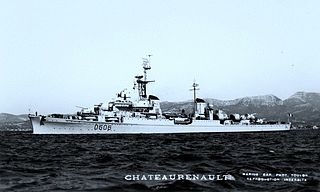 W
WChateaurenault was a French Capitani Romani-class light cruiser, acquired as war reparations from Italy in 1947 which served in the French Navy from 1948 to 1961. She was named in honour of François Louis de Rousselet, Marquis de Châteaurenault. In Italian service, the ship was named Attilio Regolo after Marcus Atilius Regulus the Roman statesman and general who was a consul of the Roman Republic in 267 BC and 256 BC.
 W
WThe Condottieri class was a sequence of five different light cruiser classes of the Regia Marina, although these classes show a clear line of evolution. They were built before World War II to gain predominance in the Mediterranean Sea. The ships were named after condottieri of Italian history.
 W
WLuigi di Savoia Duca degli Abruzzi was an Italian Duca degli Abruzzi-class light cruiser, which served in the Regia Marina during World War II. After the war, she was retained by the Marina Militare and decommissioned in 1961. She was built by OTO at La Spezia and named after Prince Luigi Amedeo, Duke of the Abruzzi, an Italian explorer and Admiral of World War I.
 W
WEmanuele Filiberto Duca d'Aosta was an Italian light cruiser of the fourth group of the Condottieri-class, that served in the Regia Marina during World War II. She survived the war, but was ceded as war reparation to the Soviet Navy in 1949. She was finally renamed Kerch and served in the Black Sea Fleet until the 1960s.
 W
WThe Etna class were two cruisers originally ordered in Italy for the Thai Navy in 1938 and subsequently requisitioned for service by the Italian Navy on the outbreak of World War II, neither ship was completed and the damaged hulls were scrapped after the war.
 W
WEugenio di Savoia was a Condottieri-class light cruiser, which served in the Regia Marina during World War II. She survived the war but was given as a war reparation to the Hellenic Navy in 1950. She was renamed Elli and served until 1965.
 W
WFiume was a Zara-class heavy cruiser of the Italian Regia Marina, named after the Italian city of Fiume, she was the second of four ships in the class, and was built between April 1929 and November 1931. Armed with a main battery of eight 8-inch (200 mm) guns, she was nominally within the 10,000-long-ton (10,000 t) limit imposed by the Washington Naval Treaty, though in reality she significantly exceeded this figure.
 W
WJean de Vienne was a French light cruiser of the La Galissonnière class. During World War II, she remained with Vichy France. She was named for Jean de Vienne, a 14th-century French knight, general and admiral during the Hundred Years' War.
 W
WLa Galissonnière was the lead ship of her class of six light cruisers built for the Marine Nationale during the 1930s. She was named in honour of Roland-Michel Barrin de La Galissonière. During World War II, she served with Vichy France.
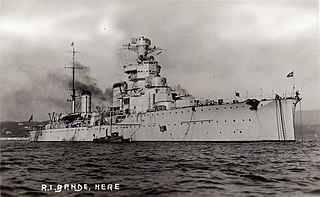 W
WGiovanni delle Bande Nere was an Italian light cruiser of the Giussano class, which served in the Regia Marina during World War II. She was named after the eponymous 16th-century condottiero and member of the Medici family. Her keel was laid down in 1928 at Cantieri Navali di Castellammare di Stabia, Castellammare di Stabia; she was launched on 27 April 1930, and her construction was completed in 1931. Unlike her three sisters, the finish and workmanship on the vessel were not rated highly. She was sunk on 1 April 1942 by the British submarine HMS Urge.
 W
WGiuseppe Garibaldi was an Italian Duca degli Abruzzi-class light cruiser, that served in the Regia Marina during World War II. After the war she was retained by the Marina Militare and upgraded. She was built by CRDA, in Stabilimento Tecnico Triestino shipyard Trieste and named after the Italian general Giuseppe Garibaldi.
 W
WGorizia was the third member of the Zara-class of heavy cruisers to be built for the Italian Regia Marina in the 1930s. Named for the town of Gorizia, the ship was laid down at the OTO Livorno shipyard in March 1930, was launched in December that year and was commissioned into the fleet in December 1931. Armed with a main battery of eight 8-inch (200 mm) guns, she was nominally within the 10,000-long-ton (10,000 t) limit imposed by the Washington Naval Treaty, though in reality she significantly exceeded this figure.
 W
WLuigi Cadorna was an Italian Condottieri-class light cruiser, which served in the Regia Marina during World War II; named after Italian Field Marshal Luigi Cadorna who was commander in Chief of the Italian Army during World War I.
 W
WMuzio Attendolo was a Condottieri-class light cruiser of the Italian Regia Marina which fought in World War II. She was sunk in Naples by bombers of the United States Army Air Forces (USAAF) on 4 December 1942. Although salvaged after the war, she was damaged beyond repair and was scrapped.
 W
WSMS Pillau was a light cruiser of the Imperial German Navy. The ship, originally ordered in 1913 by the Russian navy under the name Maraviev Amurskyy, was launched in April 1914 at the Schichau-Werke shipyard in Danzig. However, due to the outbreak of World War I in August 1914, the incomplete ship was confiscated by Germany and renamed SMS Pillau for the East Prussian port of Pillau. The Pillau was commissioned into the German Navy in December 1914. She was armed with a main battery of eight 15 cm SK L/45 (5.9-inch) guns and had a top speed of 27.5 kn. One sister ship was built, Elbing.
 W
WPola was a Zara-class heavy cruiser of the Italian Regia Marina, named after the Italian city of Pola. She was built in the Odero Terni Orlando shipyard in Livorno in the early 1930s and entered service in 1932. She was the fourth and last ship in the class, which also included Zara, Fiume, and Gorizia. Pola was built as a flagship with a larger conning tower to accommodate an admiral's staff. Like her sisters, she was armed with a battery of eight 203-millimeter (8.0 in) guns and was capable of a top speed of 32 knots.
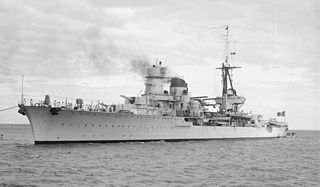 W
WRaimondo Montecuccoli was a Condottieri-class light cruiser serving with the Italian Regia Marina during World War II. She survived the war and served in the post-war Marina Militare until 1964.
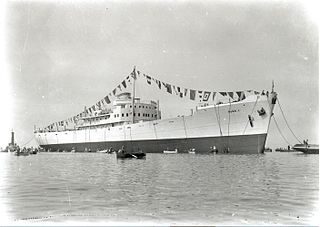 W
WThe Italian ship Ramb I was a pre-war "banana boat" converted to an auxiliary cruiser during World War II. Ramb I operated as an armed merchant in the Red Sea and was ordered to sail to Japan after the fall of Massawa to the Allies. She was sunk in the Indian Ocean before she could reach her intended destination.
 W
WThe Italian auxiliary cruiser Ramb II was a pre-war banana boat built at Monfalcone by the CRDA in 1937. She briefly served as an auxiliary cruiser with Regia Marina early in World War II before becoming an auxiliary transport with the Imperial Japanese Navy later in her career.
 W
WThe Italian auxiliary cruiser Ramb III was built at Genoa by Ansaldo in 1938.
 W
WScipione Africano was an Italian Capitani Romani-class light cruiser, which served in the Regia Marina during World War II. As she commissioned in the spring of 1943, the majority of her service took place on the side of the Allies - 146 wartime missions after the Armistice of Cassibile versus 15 before. She remained commissioned in the Italian navy after the war, until allocated to France as war reparations by the Paris Peace Treaties of 1947. Scipione Africano was decommissioned from the Marina Militare in August 1948 and subsequently commissioned into the Marine Nationale as Guichen, after briefly being known as S.7.
 W
WSMS Strassburg was a light cruiser of the Magdeburg class in the German Kaiserliche Marine. Her class included three other ships: Magdeburg, Breslau, and Stralsund. Strassburg was built at the Kaiserliche Werft shipyard in Wilhelmshaven from 1910 to October 1912, when she was commissioned into the High Seas Fleet. The ship was armed with a main battery of twelve 10.5 cm (4.1 in) SK L/45 guns and had a top speed of 27.5 knots.
 W
WTrento was the first of two Trento-class cruisers; they were the first heavy cruisers built for the Italian Regia Marina. The ship was laid down in February 1925, launched in October 1927, and was commissioned in April 1929. Trento was very lightly armored, with only a 70 mm (2.8 in) thick armored belt, though she possessed a high speed and heavy armament of eight 203 mm (8.0 in) guns. Though nominally built under the restrictions of the Washington Naval Treaty, the two cruisers significantly exceeded the displacement limits imposed by the treaty.
 W
WThe Trento class was a group of two heavy cruisers built for the Italian Regia Marina in the late 1920s, the first such vessels built for the Italian fleet. The two ships in the class—Trento and Trieste, were named after the redeemed cities of Trento and Trieste taken from the Austro-Hungarian empire after the victory in World War I. The ships were very lightly armored, with only a 70 mm (2.8 in) thick armored belt, though they possessed a high speed and heavy armament of eight 203 mm (8.0 in) guns. Nominally built under the restrictions of the Washington Naval Treaty, the two cruisers nevertheless exceeded the displacement limits imposed by the treaty.
 W
WTrieste was the second of two Trento-class heavy cruisers built for the Italian Regia Marina. The ship was laid down in June 1925, was launched in October 1926, and was commissioned in December 1928. Trieste was very lightly armored, with only a 70 mm (2.8 in) thick armored belt, though she possessed a high speed and heavy armament of eight 203 mm (8.0 in) guns. Though nominally built under the restrictions of the Washington Naval Treaty, the two cruisers significantly exceeded the displacement limits imposed by the treaty. The ship spent the 1930s conducting training cruises in the Mediterranean Sea, participating in naval reviews held for foreign dignitaries, and serving as the flagship of the Cruiser Division. She also helped transport Italian volunteer troops that had been sent to Spain to fight in the Spanish Civil War return to Italy in 1938.
 W
WZara was a heavy cruiser built for the Italian Regia Marina, the lead ship of the Zara class. Named after the Italian city of Zara, the ship was built at the Odero-Terni-Orlando shipyard beginning with her keel laying in July 1928, launching in April 1930, and commissioning in October 1931. Armed with a main battery of eight 8-inch (200 mm) guns, she was nominally within the 10,000-long-ton (10,000 t) limit imposed by the Washington Naval Treaty, though in reality she significantly exceeded this figure.
 W
WThe Zara class was a group of four heavy cruisers built for the Italian Regia Marina in the late 1920s and the early 1930s. The class comprised the vessels Zara, Fiume, Gorizia, and Pola, the last of which was completed to a slightly different design. The ships were a substantial improvement over the preceding Trento-class cruisers, incorporating significantly heavier armor protection at the cost of the very high speed of the Trentos. They carried the same main battery of eight 203 mm (8.0 in) guns and had a maximum speed of 32 knots. Among the best-protected heavy cruisers built by any navy in the 1930s, the heavy armor was acquired only by violating the terms of the Washington Naval Treaty, which limited cruiser displacement to 10,000 long tons (10,160 t).